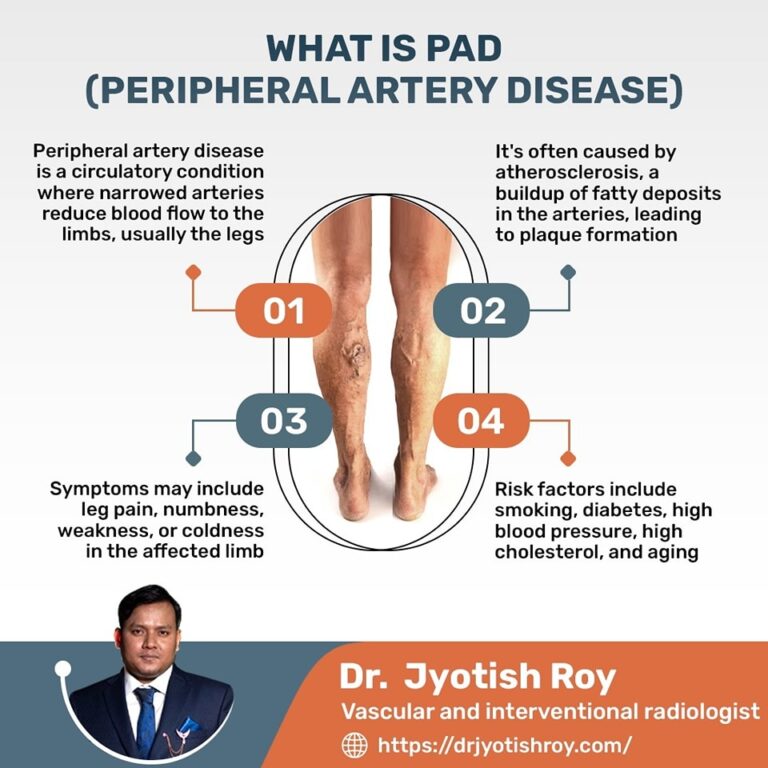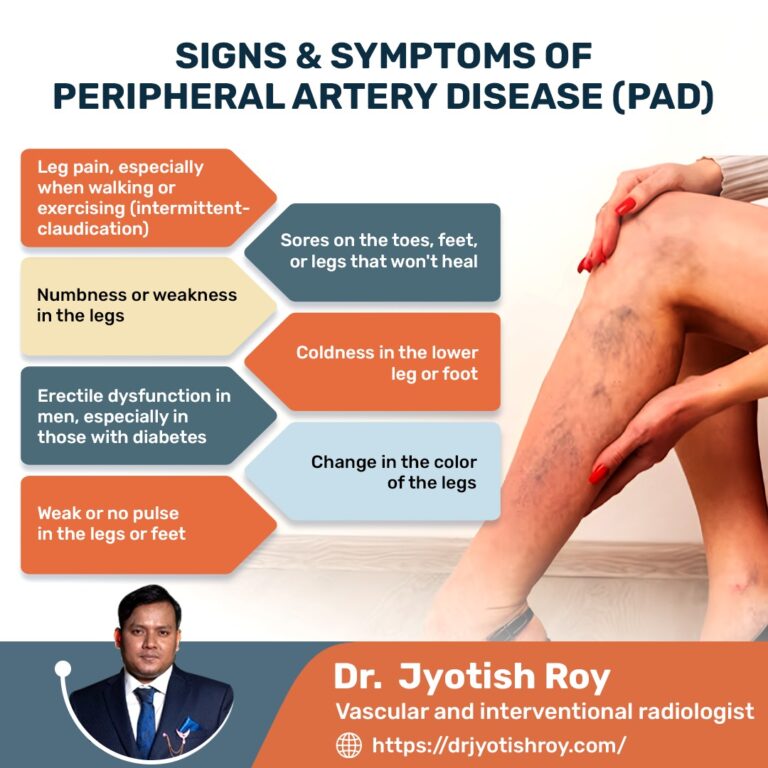Understanding Peripheral Artery Disease (PAD) and Its Treatments
Peripheral Artery Disease (PAD) is a common circulatory condition where narrowed or blocked arteries reduce blood flow to the legs. It is primarily caused by atherosclerosis, a buildup of fatty deposits in the arteries. This restricted blood flow can lead to pain, cramping, and fatigue, particularly during walking or climbing stairs. If left untreated, PAD can cause severe complications, including non-healing wounds, infections, and even limb amputation.

Symptoms of PAD
The most common symptom is claudication, which is muscle pain or cramping in the legs triggered by physical activity and relieved by rest. Other symptoms may include
The most common symptom is claudication, which is muscle pain or cramping in the legs triggered by physical activity and relieved by rest. Other symptoms may include:
- Numbness or weakness in the legs.
- Coldness or discoloration in the lower leg or foot.
- Slow-healing sores or ulcers on the toes or feet.
- Shiny or discolored skin and hair loss on the legs.
In severe cases, PAD can lead to critical limb ischemia, where blood flow is so limited that it causes pain even at rest and may result in tissue damage.
Who Is at Risk for PAD?
Several factors increase the risk of developing PAD:
Smoking
The leading cause of vascular damage.
Diabetes
High blood sugar damages blood vessels over time.
High Blood Pressure and Cholesterol
Contribute to plaque buildup in the arteries.
Age and Family History
Older adults and those with a family history of vascular diseases are at higher risk.

Diagnosing PAD
Early detection of PAD is crucial to prevent complications. Common diagnostic methods include:
Ankle-Brachial Index (ABI):
Compares blood pressure in the ankles and arms to detect blockages.
Doppler Ultrasound:
Measures blood flow and identifies narrowed arteries.
Angiography:
Provides detailed images of blood vessels using contrast dye and X-rays.
Treatment Options for PAD
The goal of PAD treatment is to improve blood flow, relieve symptoms, and prevent further complications.
1. Lifestyle Modifications:
Patients are advised to quit smoking, exercise regularly, and adopt a heart-healthy diet to reduce cholesterol and blood pressure. Maintaining a healthy weight also lowers the risk of complications.
2. Medications:
- Blood Thinners: Reduce clot formation and improve blood flow.
- Cholesterol-Lowering Drugs: Help prevent further plaque buildup.
- Medications to Improve Walking Distance: Ease leg pain and increase mobility.
3. Minimally Invasive Procedures:
When lifestyle changes and medications are not enough, interventional treatments may be recommended:
Angioplasty and Stenting:
A catheter is inserted into the blocked artery, and a balloon is inflated to widen it. A stent is then placed to keep the artery open.
Atherectomy:
A procedure to remove plaque buildup using a catheter with a cutting device.
4. Surgical Intervention:
In severe cases, bypass surgery may be required. It creates a new path for blood flow using a graft, bypassing the blocked section of the artery.

Why Early Treatment is Important?
PAD not only affects mobility but also increases the risk of heart attacks and strokes due to widespread atherosclerosis. Early diagnosis and timely treatment help:
- Improve circulation and reduce pain.
- Heal ulcers and prevent infections.
- Avoid limb amputations in severe cases.
Why Choose Dr. Jyotish Roy for PAD Treatment?
Dr. Jyotish Roy is a leading expert in vascular and interventional radiology, offering advanced, minimally invasive treatments for PAD. With a focus on patient-centered care and modern techniques, he helps patients achieve better vascular health with faster recovery times and minimal discomfort.
